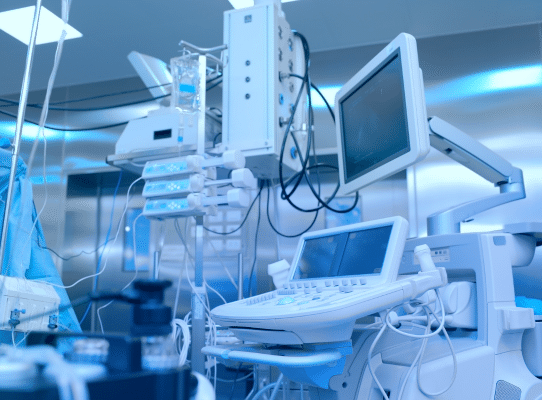Small Business Administration (SBA) loans can be a lifeline for many entrepreneurs needing financial assistance. However, the process of applying and meeting the criteria can be overwhelming. In this blog post, we’re demystifying SBA loans, providing clear and concise insights to help you understand their benefits and requirements.
Whether you’re just starting or ready to expand, the knowledge of SBA loans explained here will equip you with the confidence to move your business forward.
SBA Loan and Its Mission to Support Small Businesses
Small Business Administration (SBA) loans are designed to support the growth and sustainability of small enterprises across the United States. They facilitate easier access to funding when traditional lending options are unavailable.
One common question many entrepreneurs ask is: “Are SBA loans personally guaranteed?” In most cases, SBA requires personal guarantees from anyone owning 20% or more of the business. This requirement helps reduce risk for lenders, making it possible for more small businesses to get approval for funding.
Achieving small business loan approval hinges on meeting financial criteria and demonstrating a sound business plan and a strong potential for success. SBA loans are crafted to bolster small businesses that might otherwise struggle to secure financing.
Overview of SBA Loan Programs
SBA loans cater to diverse business needs, offering programs tailored to various stages and challenges of business ownership. Choosing the right SBA loan program for you involves understanding the unique benefits and requirements.
7(a) Loan Program
The 7(a) Loan Program is the SBA’s primary offering to help new and existing businesses obtain financing when they might not be eligible through normal lending channels. It’s versatile, covering capital needs, debt refinancing, and purchasing new equipment.
504 Loan Program
Designed for major fixed asset purchases, such as real estate or large equipment, the 504 Loan Program combines nonprofit Certified Development Companies (CDCs) loans with bank financing, typically at below-market rates.
Microloan Program
For entrepreneurs wondering how to get a startup business loan with no money, the Microloan Program could be the solution. This initiative offers loans of up to $50,000 to help small enterprises and certain non-profit childcare institutions start and grow. Microloans, like other SBA programs, may need personal guarantees.
Disaster Loan Program
Disaster loans assist businesses, homeowners, and renters recover from declared disasters. Offering low-interest loans, they help cover repair and replacement costs for damaged or destroyed assets in a disaster area.
SBA Express Loan Program
The SBA Express Loan Program expedites the approval process for loans up to $350,000. Applicants can receive a response within 36 hours-a great option for those needing quick access to capital.
Eligibility Requirements
Understanding the criteria for qualifying for an SBA loan ensures you are well-prepared when you apply. Each program has its rules, but some general guidelines apply.
General Eligibility Criteria for SBA Loans
SBA loan application approval hinges on several core requirements:
- Applicants for SBA loans in the USA must run for-profit businesses
- Operate within the U.S.
- Invested a reasonable amount of equity
- Demonstrate a need for financing
- Use the funds for business purposes.
They must also not be delinquent on any existing debts to the U.S. government.
Specific Requirements for Each Loan Program
Each SBA loan program targets different needs and has specific qualifications. For example, the 7(a) loan program, ideal for newcomers, mandates a clear demonstration of the ability to repay the loan and a sound business purpose.
Conversely, the 504 loan program focuses more on projects like real estate or long-term machinery acquisition, requiring collateral and a net worth of less than $15 million.
Factors Considered
Lenders evaluate several critical factors: business size, type, financial health, and credit score. Your business must meet the SBA’s size standards, operate for profit in an eligible industry, and have a reasonable amount of owner equity to invest. A strong credit history and financial statements demonstrating repayment ability significantly increase your chances of approval.
Can you get denied for an SBA loan? Yes, primarily if these conditions are not met, underscoring the importance of thorough preparation and understanding of the specific SBA loan requirements for new business ventures.
Step-by-step Guide to Applying for an SBA Loan
Securing an SBA loan involves careful preparation and understanding of the process. Here’s everything you need to know about SBA loans to streamline your application and enhance your chances of approval.
Necessary Documentation
Start by gathering all required documents: a detailed business plan, financial statements, tax returns, and proof of collateral, if applicable. These documents should accurately reflect your business’s financial health and demonstrate its operational viability. Lenders use this information to assess your ability to repay the loan.
Tips for a Successful Application
To increase your chances of getting approved for an SBA loan online, ensure your application is complete, and your documents are meticulously organized. Highlight aspects of your business that show stable income, growth potential, and responsible financial management.
Additionally, tailor your business plan to align with the SBA’s mission of supporting small businesses, which can significantly affect how your application is viewed.
Common Pitfalls and How to Avoid Them
Applicants often stumble by underestimating the detailed documentation required or presenting financials that do not justify the loan amount requested.
To avoid these pitfalls, double-check your application for accuracy and completeness. Seek advice from financial advisors or consultants specializing in SBA loans to ensure your financial projections and records meet the necessary standards for approval.
ROK Financial’s Personalized Guidance
Navigating the intricacies of securing an SBA-backed loan can be complex. ROK Financial excels in providing personalized guidance to simplify this process. Our experts understand businesses’ challenges, from addressing concerns about the SBA loan default rate to exploring options for SBA debt relief.
Personalized consultations help tailor solutions that meet your specific needs. Our team assists in crafting a compelling application, enhancing your chances of approval, particularly for those learning how to get approved for an SBA loan online.
We analyze your business’s unique situation to recommend the most suitable SBA loan program, considering potential pitfalls and how to mitigate them.
ROK Financial offers a free consultation to get you started. This initial meeting lets you understand the requirements, prepare the necessary documentation thoroughly, and effectively frame your application to meet the SBA’s criteria.
Call to Action
Secure the financing your business needs with expert help!
SBA loan rates are competitive, and understanding them can significantly impact your loan terms. With personalized advice, you can navigate the process more smoothly and increase your chances of success. Don’t miss out on learning how to get approved for an SBA loan online.
Contact us today for your free consultation and let our experts help you secure the SBA loan that’s right for your business.
Our team is ready to provide the personalized guidance you need. Let’s get started on securing your future today!













